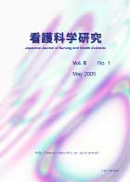In South Korea, public health nurses delivered an innovative program for vulnerable populations nationwide to promote health and self-efficacy. We reviewed and extended recent scholarly literature to provide an overview and evaluation of the strategies for the future direction of community care in South Korea, with a particular focus on home healthcare at the local level. We also reviewed community-based nurse visiting programs and their design and effects. We present a set of propositions that outline the evaluation of the results, issues, dilemmas, and implications of the current Korean program. The home healthcare program reduces healthcare disparities by addressing the social determinants of health that contribute to health outcomes in adults and the elderly. This kind of program uses "upstream" strategies that address issues surrounding quality of life, living conditions, and socioeconomic resources for disadvantaged individuals. Key program components include proactive and comprehensive care to improve the health of vulnerable groups, a focus on helping people to achieve economic sufficiency, and strategies to assist people in providing competent care for community-dwelling individuals. Intervention subjects, when compared to control subjects, demonstrated improvements in self-management of chronic disease, smoking cessation rates, and regular exercise rate. An intervention designed specifically to meet the needs of vulnerable populations with respect to poverty and chronic disease was feasible and beneficial beyond improving health behaviors and health status. Further population-based health impact evaluation is required to identify why and how we should continue or expand such programs. Additionally, practical methods of an interdisciplinary approach and collaborating with community resources are both key to challenging issues present in some communities. We discuss the limitations of the study and possible issues regarding the home healthcare program and conclude with the consideration of several key areas for future research.
View full abstract
